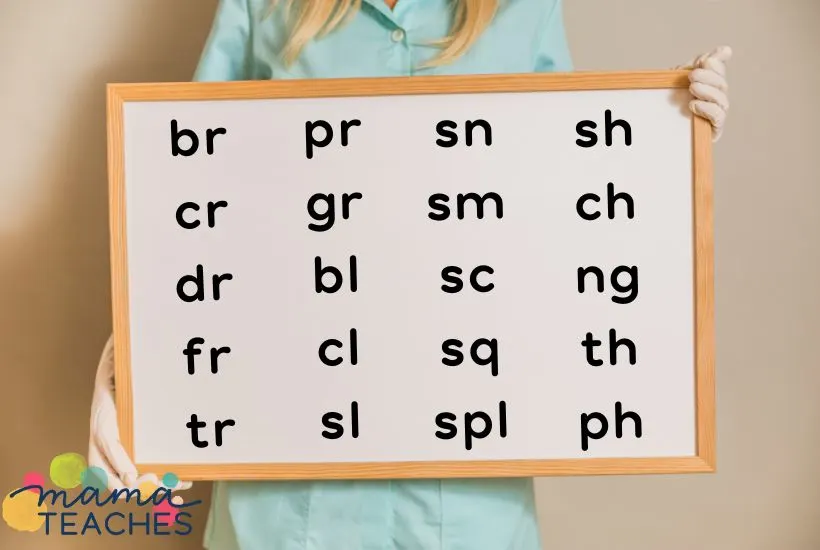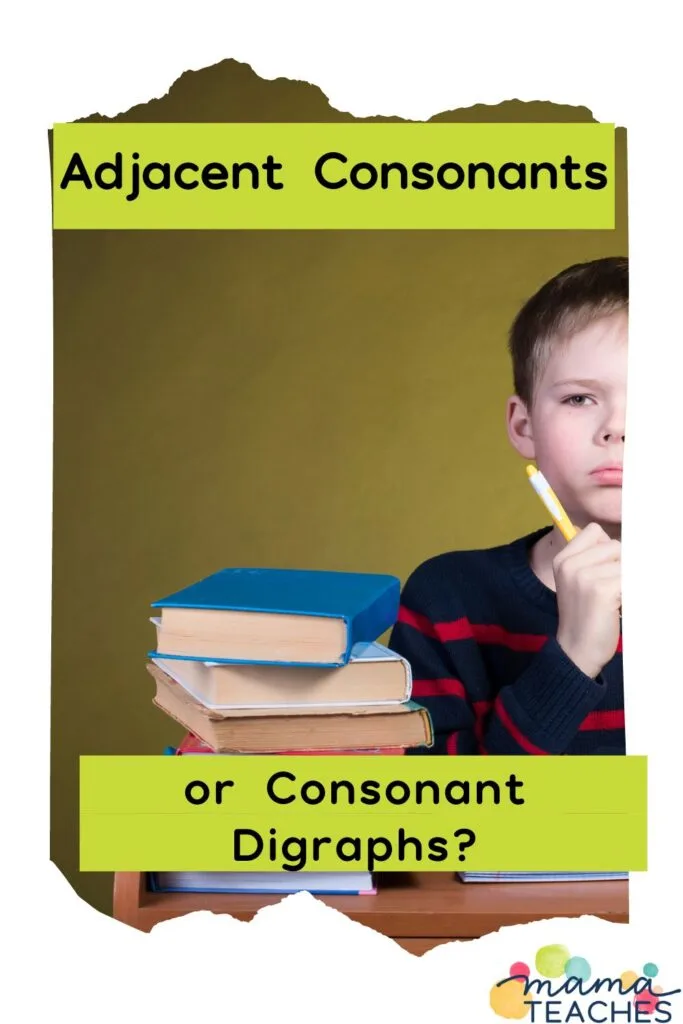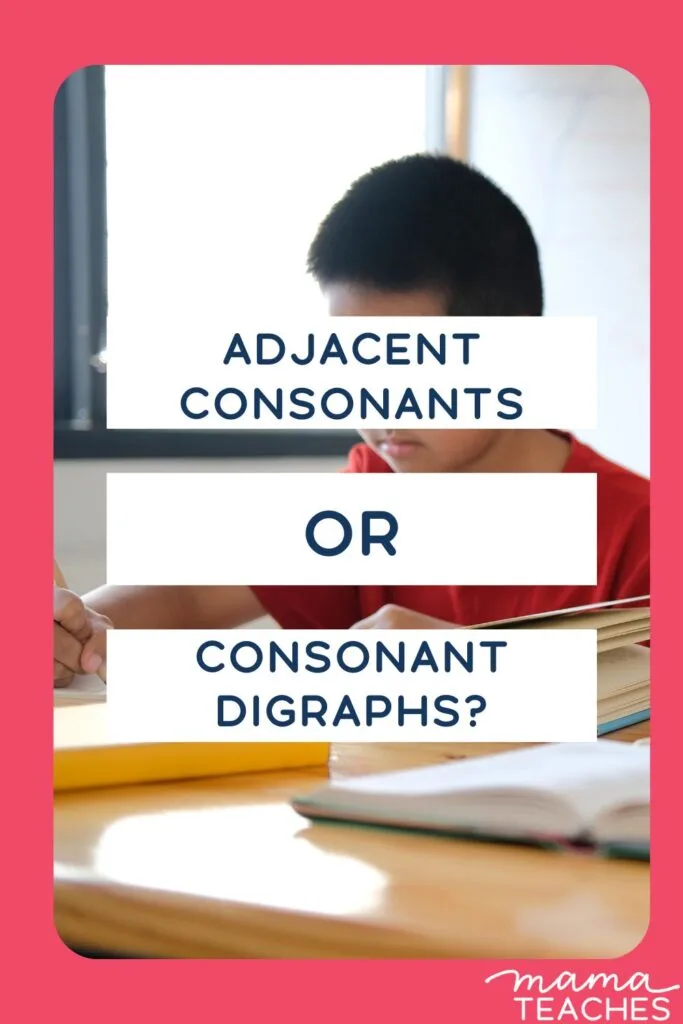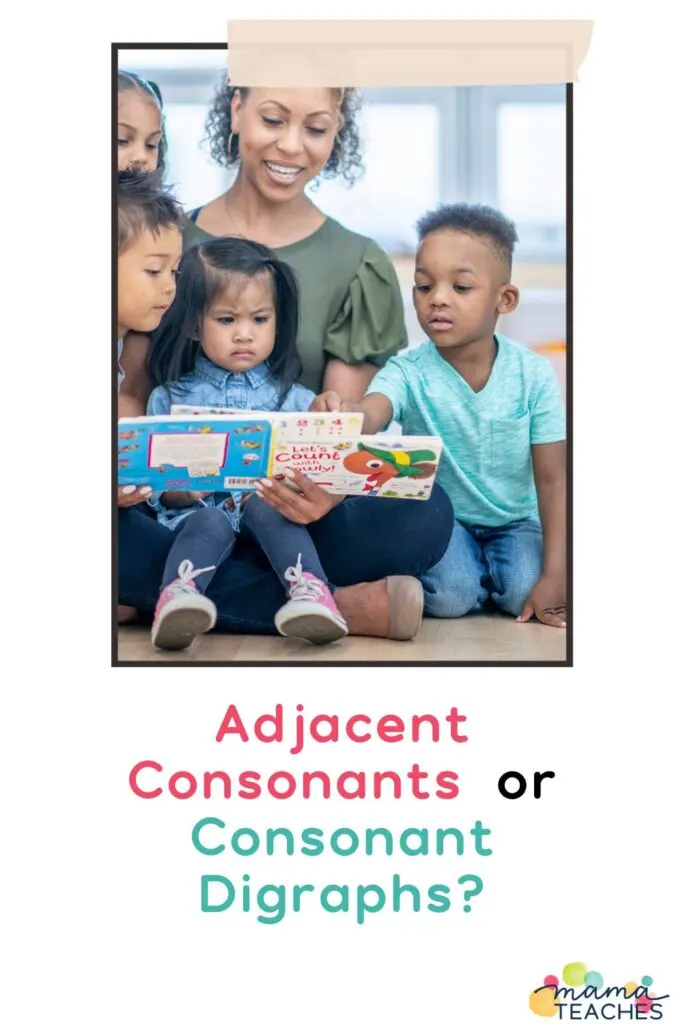How do you tell the difference between adjacent consonants and consonant digraphs?
And by the way, what are they?
We’ve got the answers here!

This article contains affiliate links to things that you might like.
Quick Answer: Adjacent Consonants Vs. Consonant Digraphs
Adjacent consonants are two or three consonants in succession that still retain their individual consonant sounds (for example, “s” and “l” in the word “slim”).
Consonant digraphs are two successive consonants that represent an entirely new sound, or phoneme.
The sound differs from the letters’ individual sounds (like “s” and “h” in “fish”).
What Are Adjacent Consonants?
Consonants are letters whose sounds at least partially obstruct the breath.
Basically, they are represented by all the letters that are not a, e, i, o, or u.
When consonants are side-by-side in a word but retain their original sound, they are considered adjacent consonants.
These consonants can appear as pairs or in groups of three.
Adjacent consonants are also called “consonant blends” or “consonant clusters.”

Adjacent Consonant Examples
There are numerous adjacent consonants.
Most commonly, you see letters paired with r, l, and s. Here are some examples of adjacent consonants:
- br as in “brick”
- cr as in “cram”
- dr as in “dream”
- fr as in “frog”
- tr as in “tree”
- pr as in “proof”
- gr as in “grain”
- bl as in “black”
- cl as in “clue”
- sl as in “sloppy”
- pl as in “please”
- gl as in “glue”
- fl as in “fly”
- sw as in “swoop”
- sp as in “spoon”
- sl as in “sleek”
- sn as in “snicker”
- sm as in “smear”
- sc as in “scooter”
- sq as in “square”
- st as in “best”
- spl as in “splat”
- spr as in “sprig”

What Are Consonant Digraphs?
Consonant digraphs are pairs of consonants that represent brand new sounds.
The letter “s” makes the /s/ sound in “some,” and the letter “h” makes the /h/ sound in “have.”
When you see them together, they make an entirely new sound: /sh/ as in “shine.”
Consonant digraphs are less common than adjacent consonants.
The digraph can also be adjacent to another consonant: like “sh” and “r” in the word “shrug.”
The letter “r” is not considered part of the digraph.
Examples of Consonant Digraphs
The English language does not have very many consonant digraphs.
Two of the digraphs on the list are spelled the same but are pronounced in different ways.
- sh as in “shy”
- ch as in “chair”
- ch as in “chord”
- ng as in “sing”
- th as in “thing”
- th as in “them”
- ph as in “phone”
- wh as in “wheel”
- ck as in “sick”

What Is the Difference Between Adjacent Consonants and Consonant Digraphs?
When teaching someone to read, you must tackle adjacent consonants and consonant digraphs in different ways.
Adjacent consonants can be decoded separately.
You merely practice them together in words to help the student read more smoothly and blend the sounds.
Consonant digraphs must be presented as new topics since their sound is not intuitive.
Hence, they often take more time to master.
